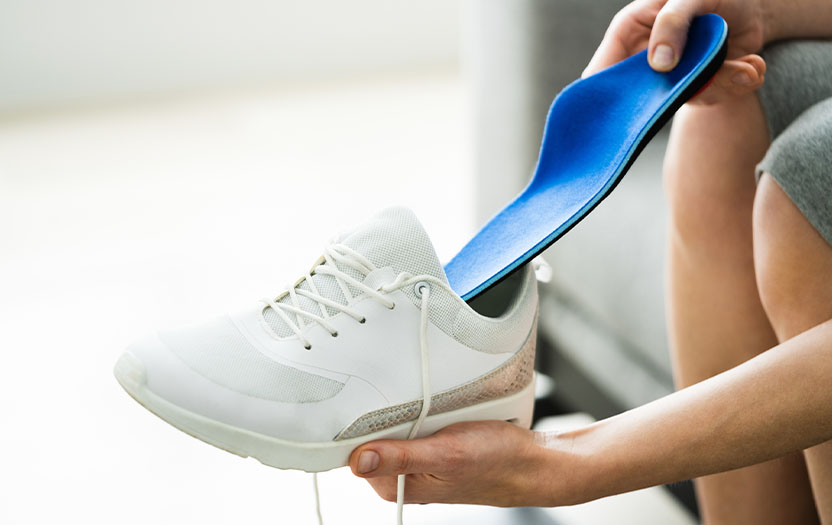
This post was written by Ashley M. Bojrab, DPM, FACFAS, ABPM, CWS, PPG – Podiatry.
In the office, patients commonly ask their podiatrist if they’re wearing the “correct” orthotic. People often purchase their orthotics over the counter (OTC) after standing on a machine that makes recommendations or simply guessing. But how do you know if it’s working? Here are a few things to look for to help determine if you have the best insert for you.
Foot pain should be getting better, not worse. Inserts, just like shoes, can cause you to experience ankle, knee and/or back pain. It’s important to listen to your body. When first trying orthotics, there could be some discomfort as your body adjusts. This is because it changes the way you have been walking over the course of your life. For this reason, it’s vital to break the inserts in gradually. The pain should not be new or persist.
The orthotic should fit the shoe, not the other way around. Sometimes, patients pick up orthotics that are so big and bulky, they feel like they need to buy a bigger shoe to accommodate. If this is the case, it’s not the right orthotic for you. The orthotic should fit your foot type, not just the shoe. Look at the depth of the heel cup and the arch along the mid foot. I like full-length orthotics, because they don’t move in the shoe. Half-length orthotics are designed for a more fitted shoe, such as a dress shoe. (Tip: Remove the sock liner within the shoe to make more room for your orthotic.)
Orthotics wear out just like regular shoes. It varies how often they should be replaced, but some good signs it’s time for a new set would be if there are cracks or holes within the orthotic, loss of shape, breaks or if they are causing new aches and pains.
Key takeaways
The next time you put your shoes and inserts on, ask yourself if you have knee, hip or back pain. Could it be from the shoes or inserts? Ideally the pain should be improving and not getting worse after a fair break-in period. A good insert will be fitted to the foot and not just the shoe. Firm, full-length with an arch and deep heel cup is the desirable type of insert. But don’t guess. If something is not feeling right stop using and schedule an appointment with your podiatrist.



